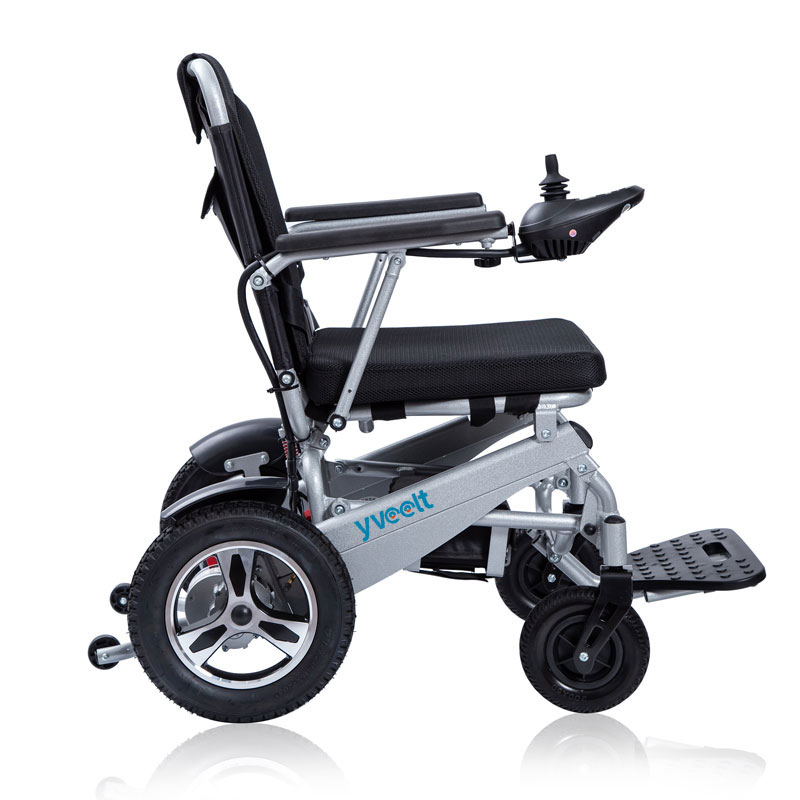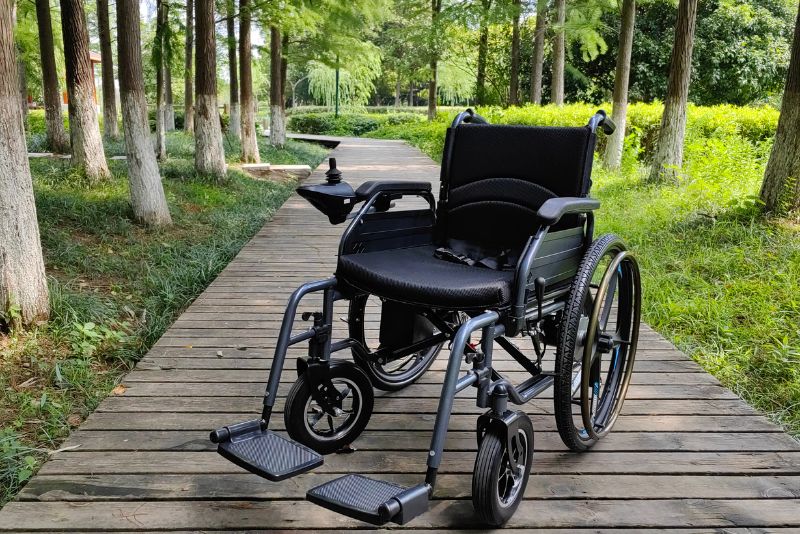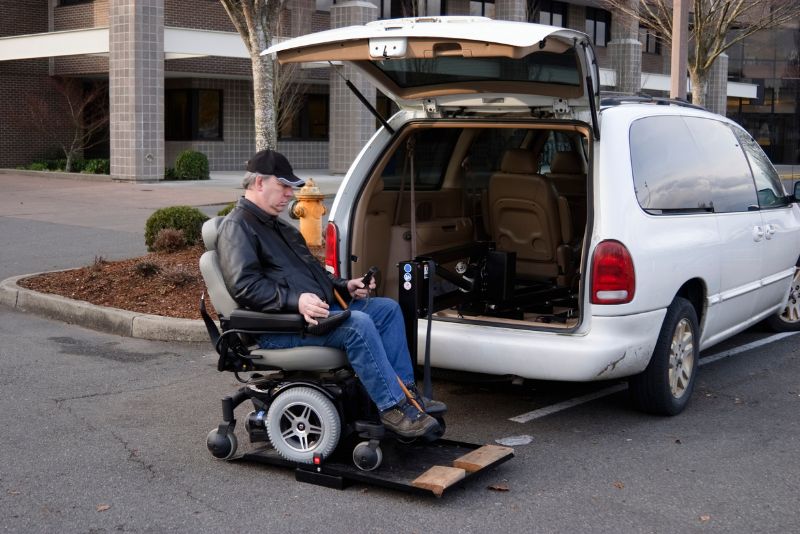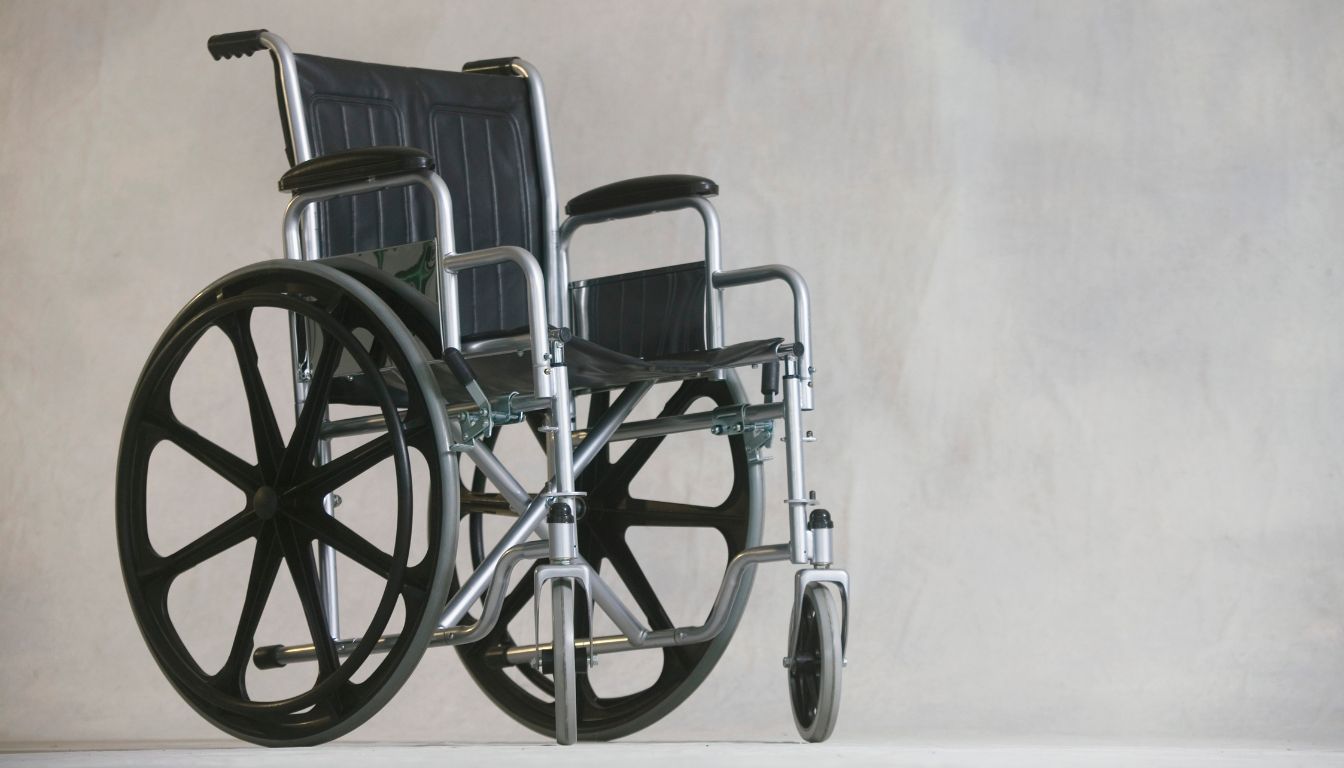Choosing the perfect wheelchair can be daunting, especially with so many sizes and options available. Did you know that a properly fitted wheelchair is crucial for comfort and mobility? Our guide will walk you through understanding wheelchair dimensions to find the right fit for your needs or those of a loved one.
Dive in to make an informed choice!
Understanding Wheelchair Dimensions and Categories
Navigating through the different categories of wheelchairs can be overwhelming. However, understanding their dimensions is crucial to finding the perfect match for your mobility needs. Lightweight models have a compact design, while heavy-duty chairs have a robust build. Each type has distinct sizing specifications that are influenced by the intended use and the user’s physique.
Standard Wheelchairs Dimensions (18-20 inches)
Standard wheelchairs are built for users who can’t walk due to health problems. They have a seat that’s 18–20 inches wide, perfect for everyday use, these chairs fit through most doorways with ease.
Plus, they support up to 325 pounds, so many different people can use them safely.
These manual wheelchairs are strong but not too heavy at 32.4 pounds. Their size is handy too—27.5 inches wide when open and still easy to push around thanks to smart design features.
Each wheelchair gives its user freedom and the ability to move independently or with help from someone else.
Heavy-Duty Wheelchairs Dimensions (20-30 inches)
Heavy-duty wheelchairs with seat widths of 20-30 inches are built strong to support more weight. They have wider seats and sturdy frames for larger users. These chairs can handle tough daily use.
Their durability means less worry about wear and tear.
Choosing the right heavy-duty wheelchair matters for comfort and safety. Make sure it fits the user’s size and needs well. Measure their width and check the chair’s weight limit before picking one out.
Look also at accessories that can help, like elevated armrests or extra-wide footplates. A good fit helps avoid injuries and keeps users moving freely every day.
Lightweight Wheelchairs Dimensions (16-18 inches)
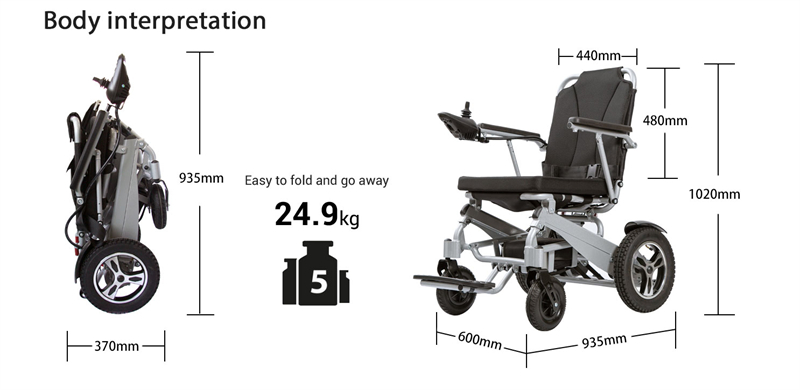
Lightweight wheelchairs are easy to move and perfect for people who can’t walk due to health issues. With seat widths between 16 and 18 inches, they fit well in tight spaces. These chairs help prevent injuries while offering comfort.
They need the right size to work best.
Most lightweight wheelchairs fold up, making them great for travel. Custom options let users pick colors, fabrics, and features that meet their needs. Users stay safe and comfy when the chair fits just right.
Always measure before you choose a wheelchair to make sure it’s the perfect match!
Electric Wheelchairs Dimensions (17- 20inches)
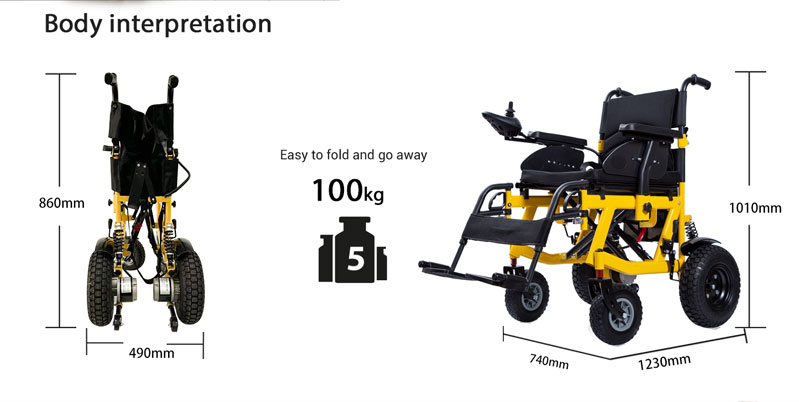
Electric wheelchairs offer freedom with their 17 to 20-inch seats. They come in styles for everyday use, sports, and custom terrains. Users can enjoy sport chairs or tackle challenges with models designed for rough ground.
Many stand up while others glide smoothly thanks to motors. These powered chairs enhance mobility and life quality.
These wheelchairs are perfect in size for comfortable seating and easy control. Features like adjustable controls make driving simple even with limited strength. With prices starting at $449.95, electric wheelchair options vary widely to fit diverse needs and budgets—helping people get around better every day.
How to Measure for the Right Wheelchair Dimensions
To ensure a perfect match for comfort and mobility, mastering the art of measuring wheelchair dimensions is crucial—dive deeper to discover how it’s done.
Measure User’s Seated Height
To get the seated height, have the user sit on a flat surface. Measure from the surface to the top of their head. Make sure they sit up straight! This measurement helps you find a wheelchair that lets the user stay comfy and move easily around tables and desks.
Next, check if the chair’s seat can adjust to meet ADA standards for accessible surfaces. The right seat height means better posture and less strain when reaching or wheeling around.
Use this number when picking out a wheelchair to ensure it fits well with daily activities and any workspaces or dining areas they’ll use.
Measure User’s Width
Find out the wheelchair user’s width to pick the right chair size. The standard width for a typical wheelchair is 18 inches, but everyone is different. You need to measure across the user’s hips and thighs when they are sitting down.
This will show you how wide their wheelchair should be.
Make sure there’s extra space on each side of the seat so it’s comfy for them to sit in all day. If they have clothes with big pockets or use cushioned pads, think about that too! For those who need an extra wide chair, take careful measurements because proper fitting is key for comfort and mobility.
Consider User’s Weight
Make sure the wheelchair can support the user’s weight. Every chair has a limit. For instance, a standard model often holds up to 325 lb. This is crucial for safety and comfort. If someone weighs more, you need a heavy-duty wheelchair.
Check the weight of the chair too. A lighter frame makes it easier to push and transport. Some lightweight chairs are only 32.4 lb! They work well for users who travel often or move around a lot on their own.
Finding the Perfect Wheelchair Dimensions
Navigating the wide array of wheelchair dimensions isn’t just about the numbers; it’s an intimate quest to match personal requirements with precision and care. Beyond a mere purchase, finding your ideal fit is akin to discovering a key that unlocks enhanced mobility and freedom—let’s delve into how this can be expertly achieved.
Determining Individual Needs
Every user has unique needs based on their disability, body shape, and daily activities. These individual factors greatly influence the type of wheelchair that is best suited for a person’s lifestyle.
It’s important to consider how often the wheelchair will be used indoors versus outdoors, as this determines the need for different tire types and durability levels. For example, someone who moves around in narrow doorways or sharp corners requires a more compact wheelchair with greater maneuverability.
Consulting with a healthcare professional can help pinpoint these specific requirements. They assess factors like posture support and potential pressure points to ensure maximum comfort and health benefits.
The right fit reduces risks of injury from incorrect sizing or support features. Always measure carefully to match the user’s leg length, width, and overall body position with the appropriate chair dimensions.
Remember that proper fitting helps maintain good health over time by preventing discomfort and facilitating better propulsion of the wheelchair.
Consulting With a Healthcare Professional
Talk to a healthcare professional before you buy a wheelchair. They know how the size and fit can affect your health. They’ll look at your posture, weight, and how you move. This helps them find the right wheelchair for you.
Your doctor or therapist will make sure your chair meets safety rules too. They understand ADA regulations and will help pick a chair that’s safe and easy to use. Always get their advice to make sure your new wheelchair is the best it can be for your needs.
Considering Folding Options
Check if a wheelchair can easily fold up for storage or transport. This feature is key when space is tight. Fold-up models are great for car travel and small homes. Look at how the chair folds, too: some have quick-release levers, others might need more steps.
Choose foldable wheelchairs for flexibility. These chairs help users move around and store their chair without hassle. Make sure the folding mechanism is easy to use and secure. It should not make the chair less sturdy when open.
Folding options keep life simple and improve how you use wheelchairs every day.
Customizable Options
Wheelchairs can be tailored to fit each user’s unique needs. You can choose extra-wide seats and specific measurements for a perfect fit. This customization prevents injuries and boosts comfort.
Innovative technology offers more features for wheelchairs today. Options include adjustable armrests, removable footrests, and various upholstery materials. These choices help enhance support and well-being for users.
Popular Wheelchairs and Their Dimensions
Delve into the specifics of top-rated wheelchairs to discover which dimensions align with your needs—empower your mobility decision by exploring our detailed profiles on each model.
Yveelt Medical ET300C Lightweight Electric Wheelchair
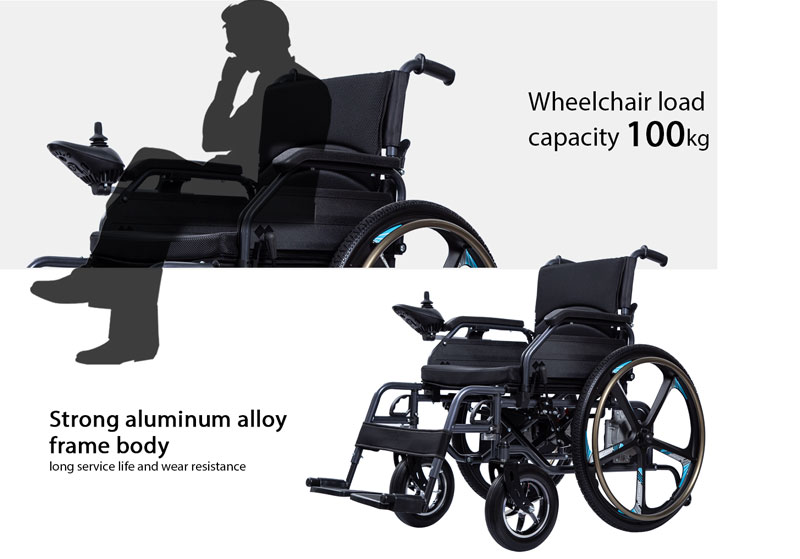
The Yveelt Medical ET300C Lightweight Electric Wheelchair stands out with its ease of transport and durability. It supports up to 220 pounds and weighs 68.2 pounds, making it a breeze to lift and store.
The wheelchair’s dimensions are convenient for any setting: 27 inches in width when open, easily fitting through doorways, and shrinking down to just 18.5 inches wide when folded.
This chair comes with nylon upholstery that is easy to clean and plastic footrests that offer support without adding extra weight. Locking rear wheels ensure safety while sitting still or on the go.
Accessories compatible with industry standards can be added for customization, such as full-length armrests or elevating leg rests for extra comfort. Choose the Yveelt Medical ET300C if you’re looking for a mix of function and portability in an electric wheelchair.
ET500 Foldable Foldable Electric Wheelchair
ET500 Foldable Electric Wheelchair is a top pick for those who need to get around easily. Its sturdy design can hold up to 220 pounds but only weighs 63.2 pounds itself. Fold it up, and this chair thins down to just 14.56 inches wide, making storage a breeze.
You won’t have trouble fitting through doorways with an open width of 23.6 inches.
This model comes with electromagnetic brakes and an aluminum alloy frame making it lightweight yet durable. For comfort during rides, it has a roomy 17.32 inch wide by 17.7 inch deep seat.
DGN5001 All-Terrain Electric Wheelchair
The DGN5001 All-Terrain Electric Wheelchair is tough and ready for outdoor adventures. It’s made for users who can’t walk because of health issues. This chair lets people move around on different surfaces with ease.
Hills, gravel, and grass won’t stop it. The wheelchair is strong but also comfortable for daily use.
This electric model has special wheels that handle rough ground well. Users enjoy more freedom and a better quality of life with it. Its design helps people go places they never could before in a wheelchair.
Additional Considerations for Choosing Wheelchair Dimensions
Beyond the primary measurements, delving into additional features such as armrest and back pocket dimensions, or the height of footrests and footplates can significantly enhance comfort and functionality.
Selecting the right upholstery material also plays a pivotal role in overall satisfaction—both in terms of durability and user experience.
Armrests and Back Pocket Dimensions
Armrests on a wheelchair give users a place to rest their arms and help with balance. They also make it easier to get in and out of the chair. For comfort, armrests come in different lengths and heights.
Make sure they fit the user’s size. Too high or too low can cause discomfort.
The back pocket of a wheelchair is handy for storing belongings when on the go. Get one that is big enough for your needs but snug enough to keep items secure. It should be easy to reach without straining or twisting around too much.
Correct fitting ensures everything stays in place during movement.
Footrest and Footplate Height
Footrest and footplate height matter a lot for comfort and safety. They range from 3 to 7 inches, based on what the user needs. If they’re not right, they might hurt your posture or health.
Measure carefully to avoid these problems.
You want the best fit for your legs and feet? Make sure you pick the correct height! This will help keep you comfy and free from injury. Look at each person’s specific needs before making a choice.
Your quality of life could depend on it!
Upholstery Material
Upholstery material can make a big difference in a wheelchair’s comfort and function. Soft fabrics may feel good but might not offer the support needed for proper posture. On the other hand, firm materials help with positioning but could be less comfy for long periods.
Choose carefully to avoid skin issues like pressure sores.
The type of upholstery affects how heavy and easy to move the wheelchair is too. Durable materials might add some weight, making it tougher to push or turn the chair. Lightweight options improve maneuverability but may wear out faster if used a lot.
Keep these trade-offs in mind while picking out your chair’s fabric.
Helpful Tools and Resources
Navigating the diverse world of wheelchair dimensions doesn’t have to be overwhelming—with our curated selection of online guides and tools, pinpointing your ideal specifications becomes a streamlined process.
Embrace the convenience of digital resources designed to offer a refined product search experience, tailored to meet individual needs and categories effortlessly.
Online Dimension Guides and Drawings
Online dimension guides and drawings are key tools for picking the right wheelchair. They show you the exact seat size, height, width, and frame design needed. You can see how different sizes will fit through doorways and around tight corners.
Use these guides to understand how a wheelchair’s dimensions affect comfort and health.
Tech improvements are making wheelchairs better than ever. Online resources let you keep up with these changes. They help you imagine what it’s like if a wheelchair is too big or small for the user.
Make sure to check out these online aids to find a fit that works best.
Product Search and Categories
Start your search by exploring different wheelchair categories. There are manual chairs, sport wheelchairs, custom terrain chairs, standing position models, and motorized options. Each type suits specific needs and lifestyles.
For example, a sport chair is lighter and designed for agility in sports activities.
Manual chairs are great for everyday use and simple to transport. Heavy-duty models offer extra support for larger individuals. Lightweight options are best when you need something easy to handle on the go.
If you can’t push yourself or want more independence, check out electric wheelchairs with varying dimensions.
Use filters to narrow down choices by width or weight capacity. This makes finding the perfect match faster. Accessory compatibility also matters—look for industry-standard features so accessories like cushions fit well.
Some sites even provide ADA specs right on the product page to help ensure your selection meets accessibility requirements comfortably! Always keep overall width in mind; it’s key that your new wheelchair will get through doorways easily at home or when out about town.
Final Thoughts
Picking the right wheelchair is important. It should match your body and needs. A good fit helps you stay comfy and move better. Always talk to a pro before buying one. They’ll help you find a great chair that fits just right!
FAQs
1. What should I keep in mind when choosing the correct wheelchair size?
When selecting a wheelchair, consider the user’s condition and ensure there is enough clearance for comfort. Use a chart to address all dimensions accurately.
2. Can I remove parts of the wheelchair to get better clearance?
Yes, typically you can extend or remove certain parts – like footrests – to improve clearance and fit.
3. Are transport wheelchairs smaller than other types?
Transport wheelchairs are indeed typically smaller, designed for quick trips and easier storage.
4. How do I make sure I’ve done the sizing correctly?
To size properly, follow manufacturer guidelines and measure twice; if needed, seek professional advice to ensure it’s done correctly.
5. Is there a special wheelchair size for kids?
Yes! Wheelchairs come in pediatric sizes that are specifically designed with smaller dimensions suitable for children.


